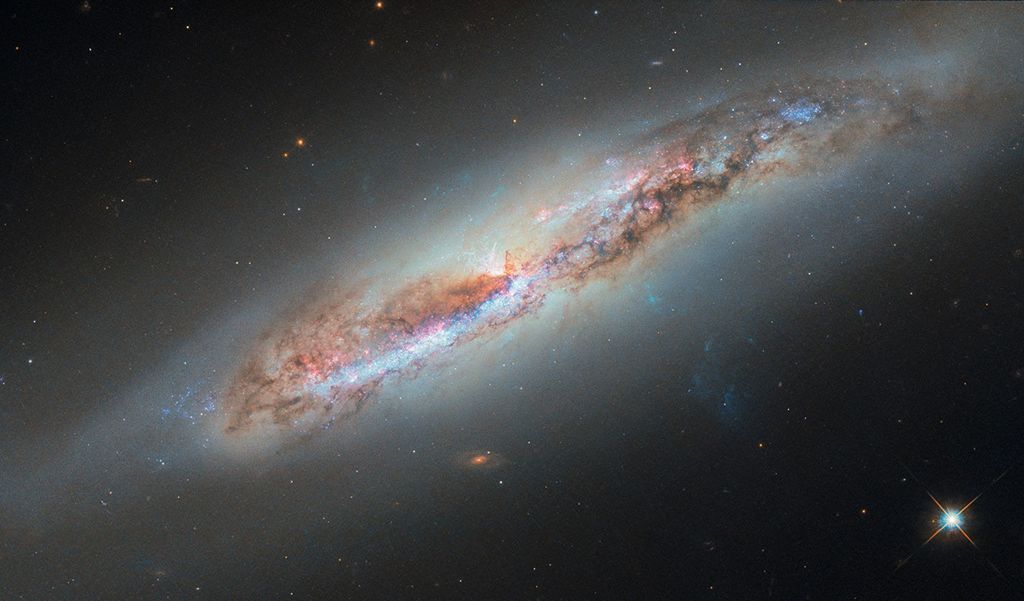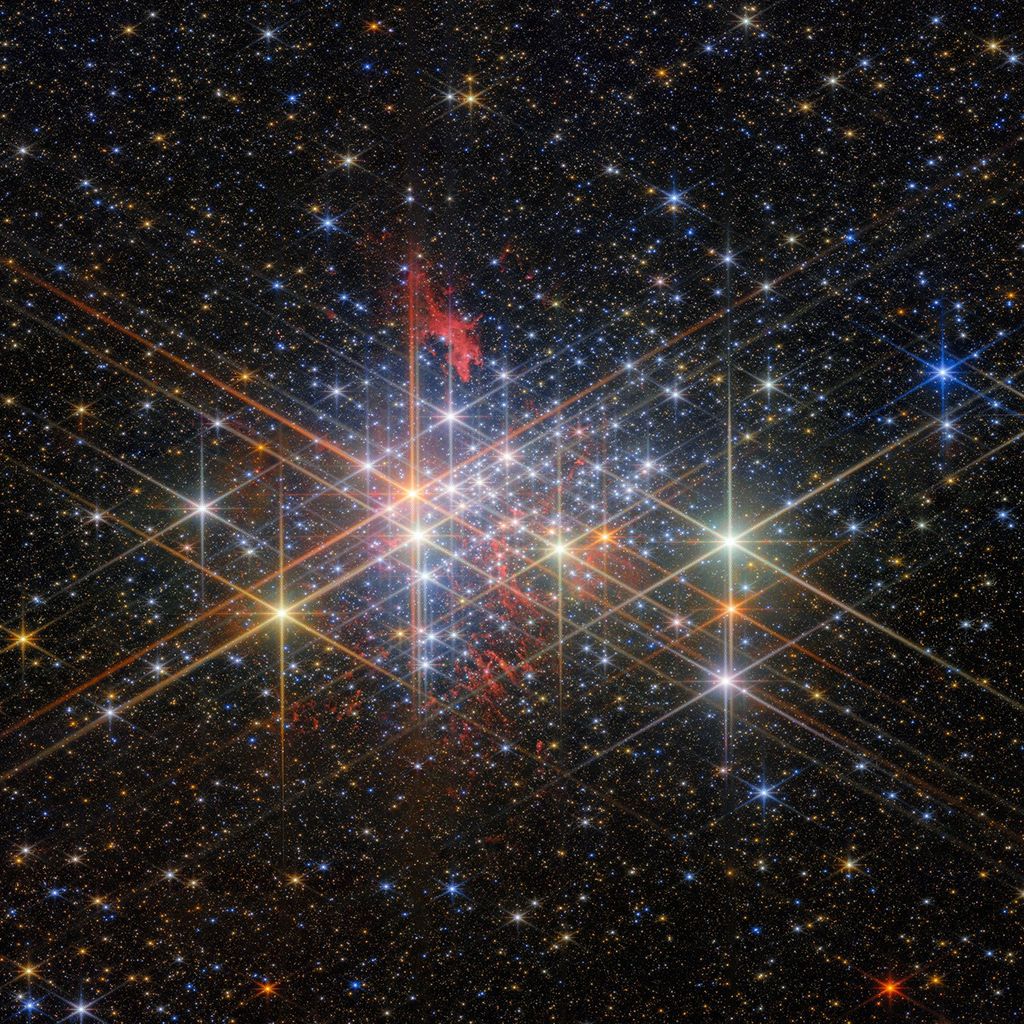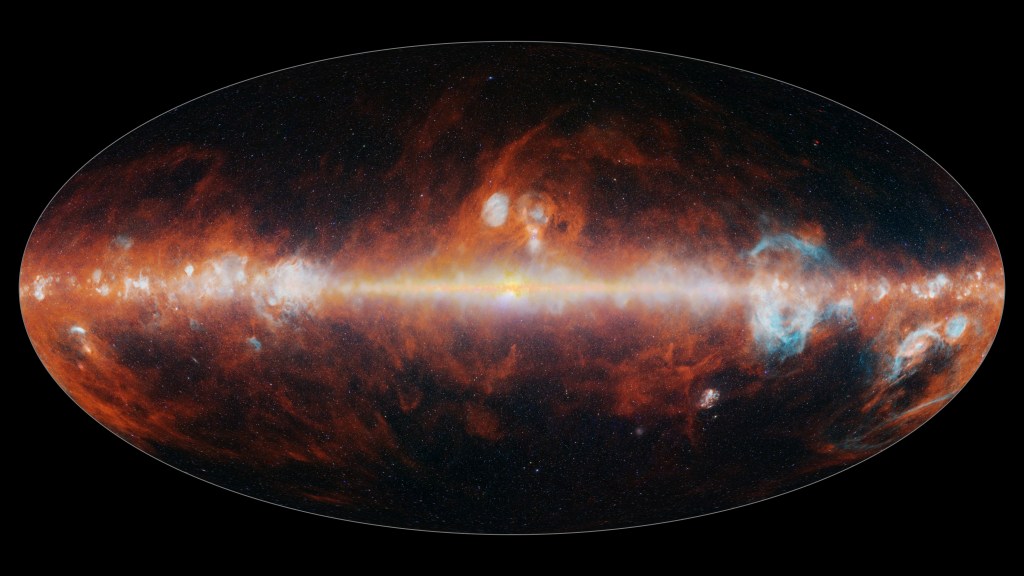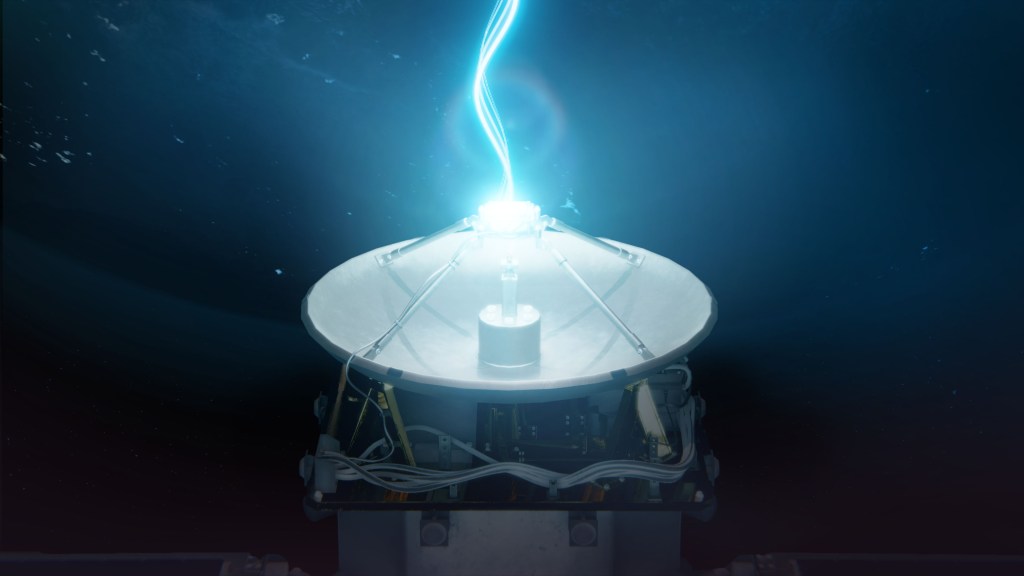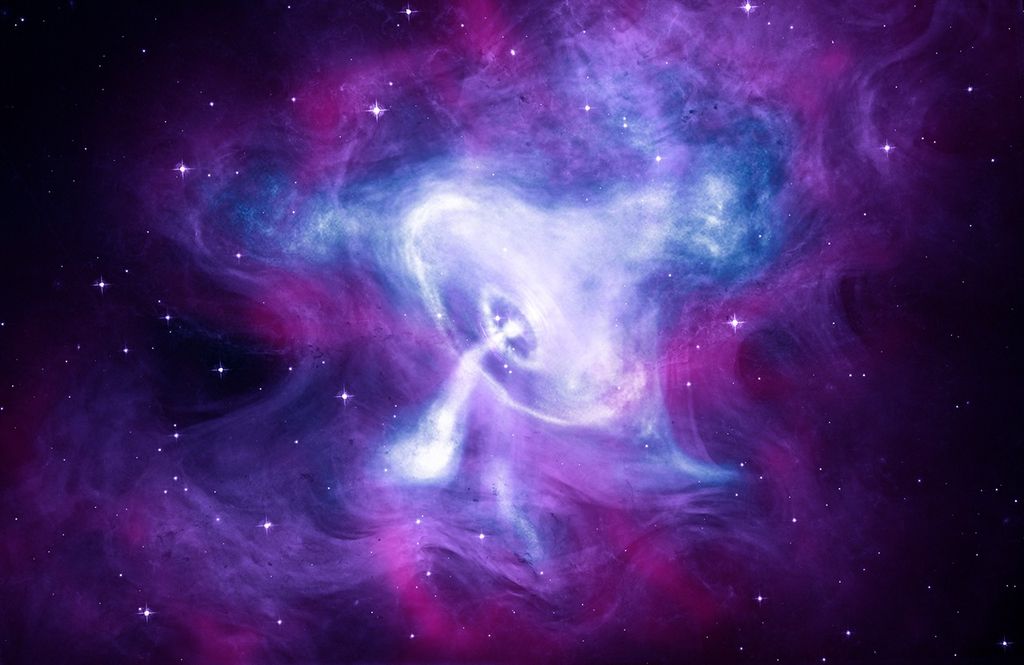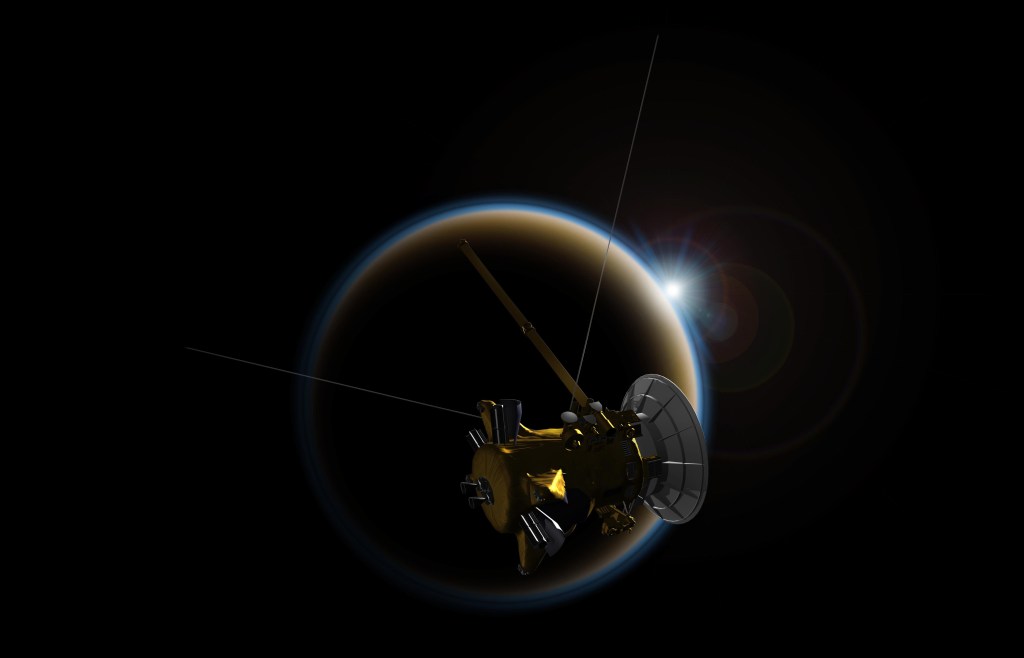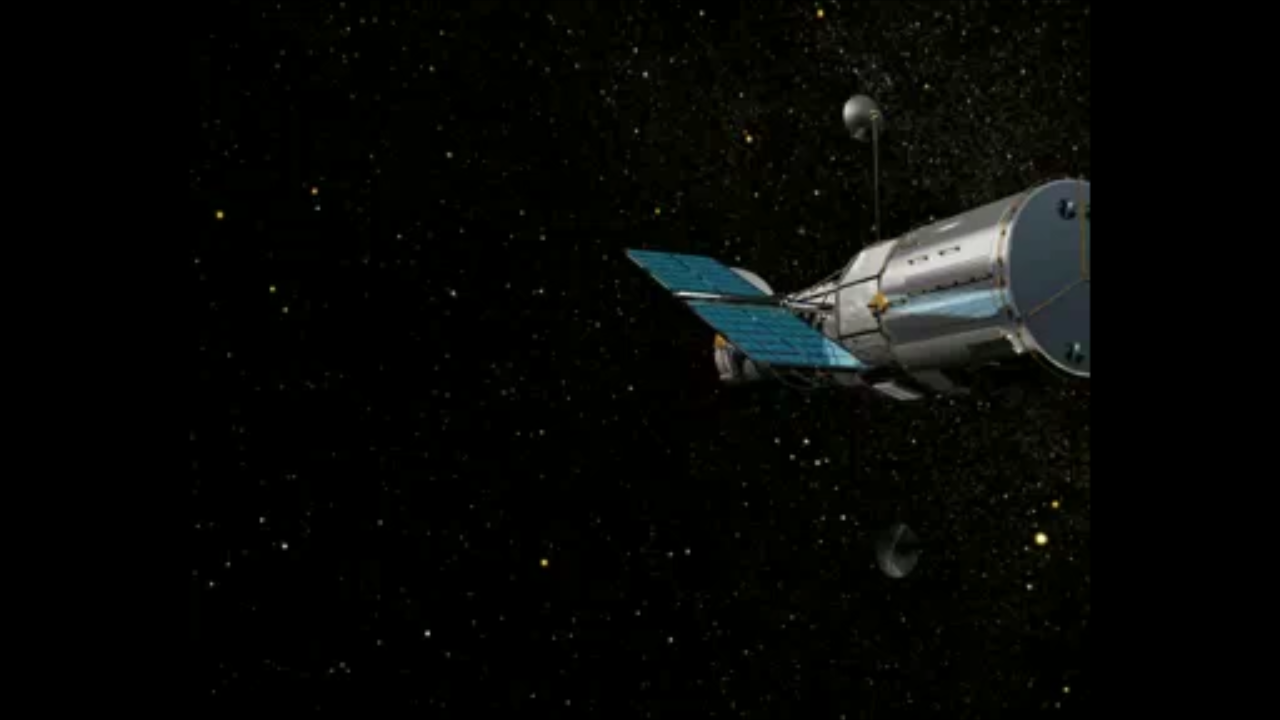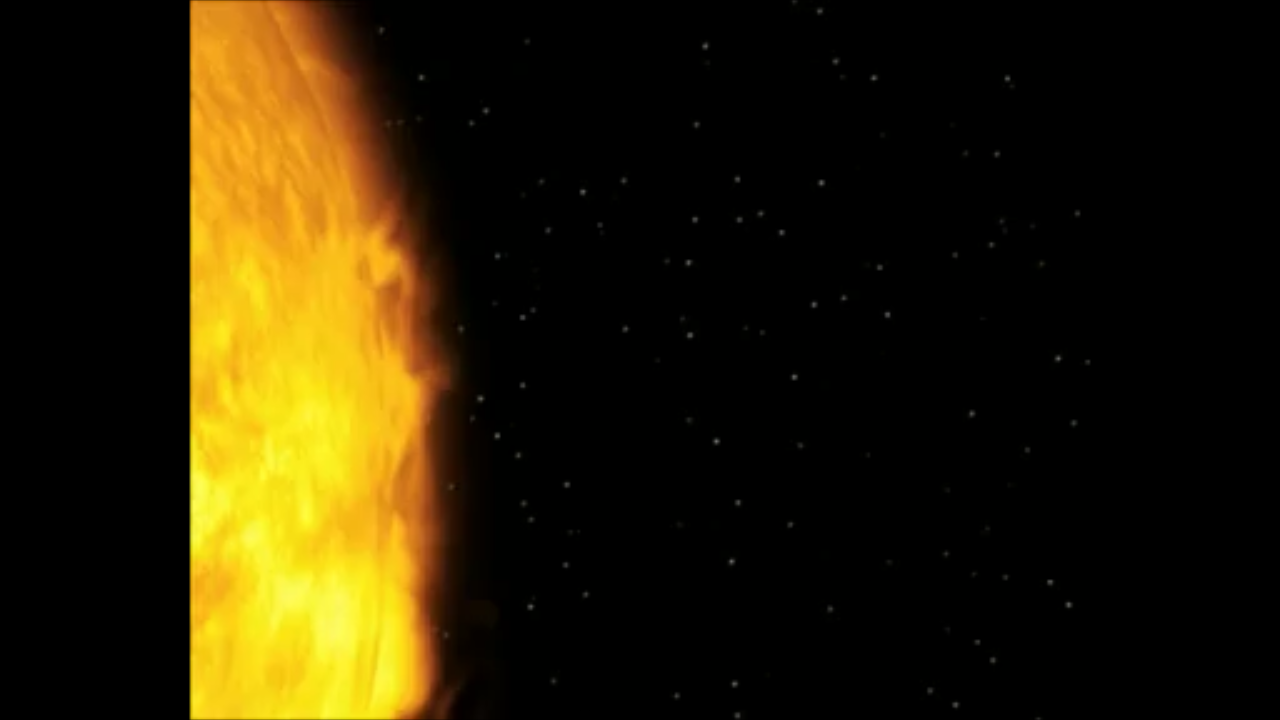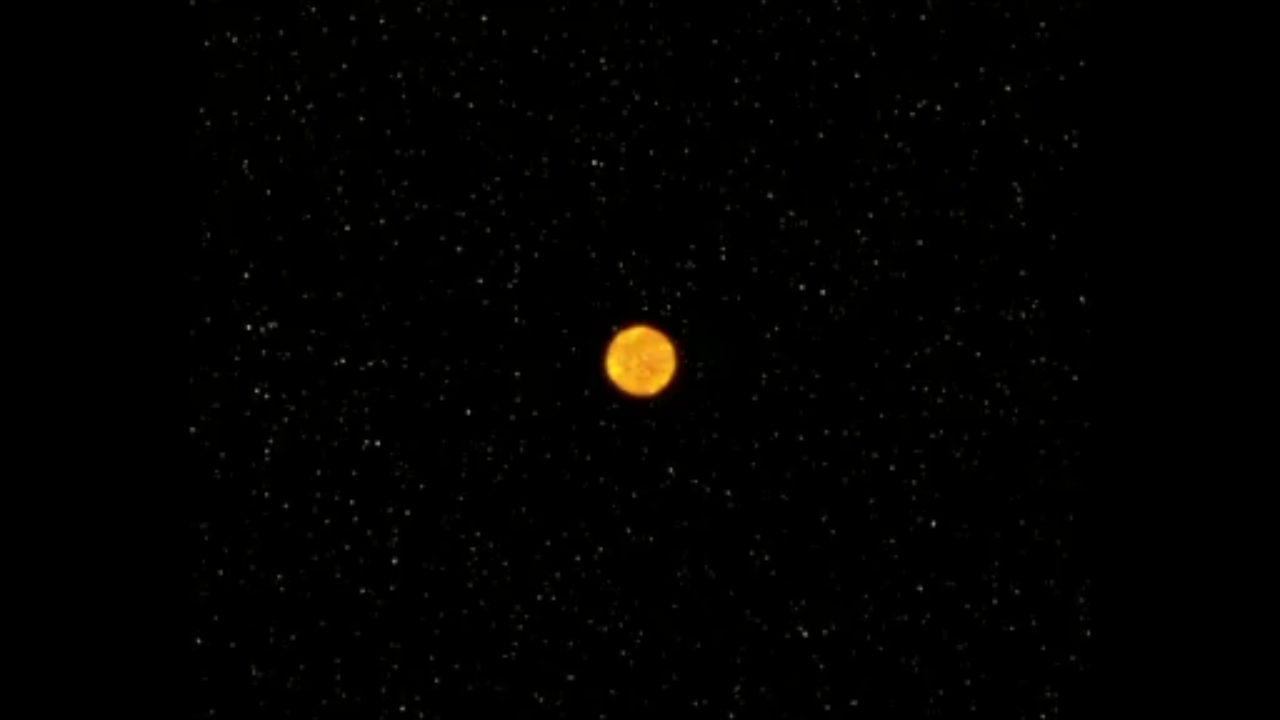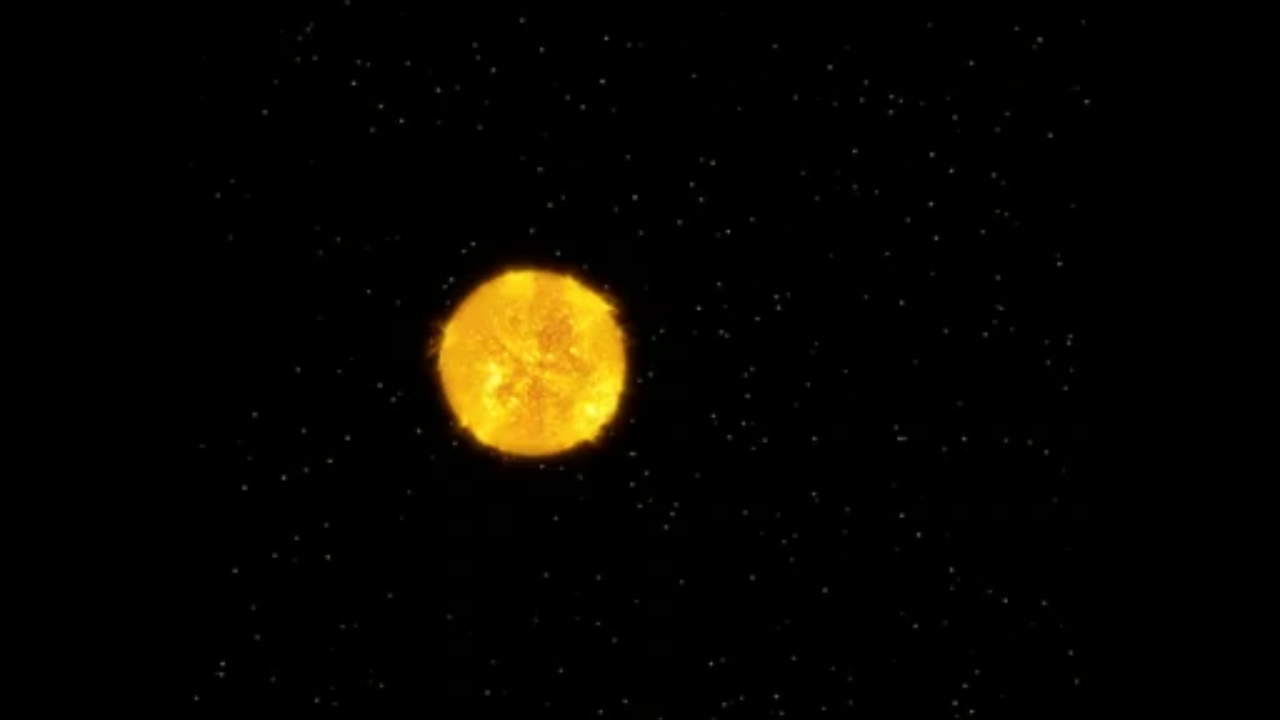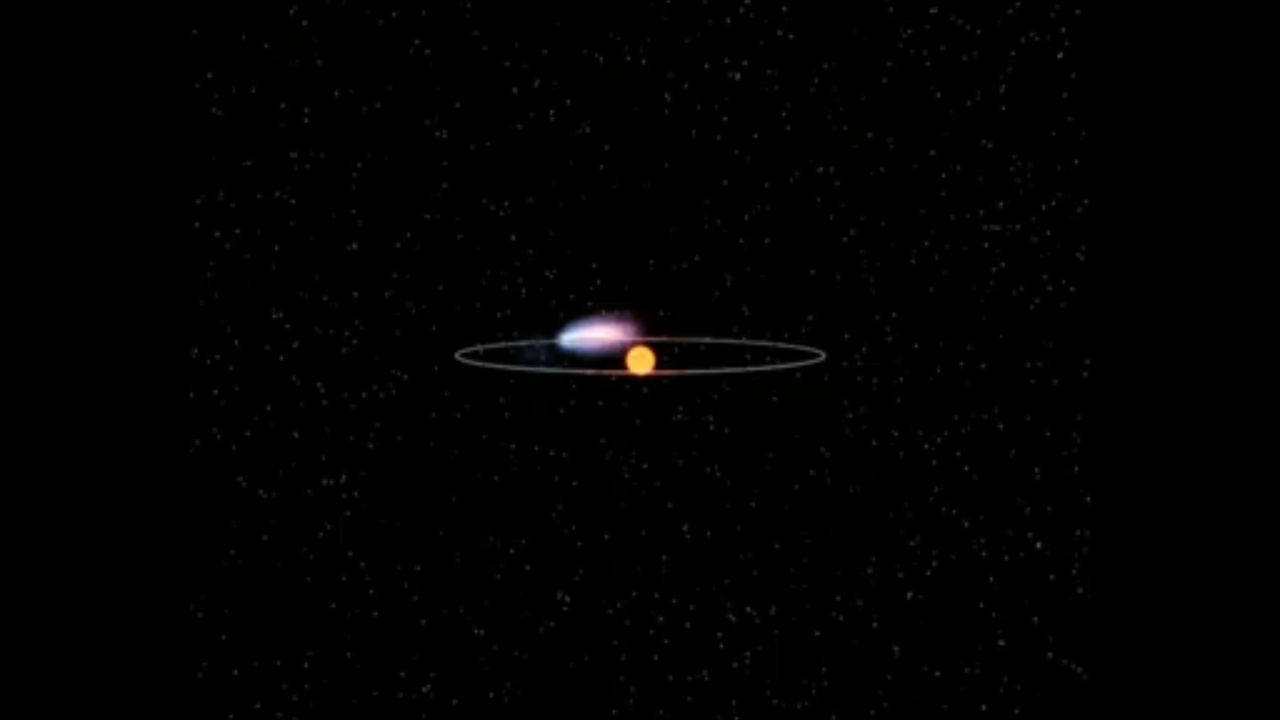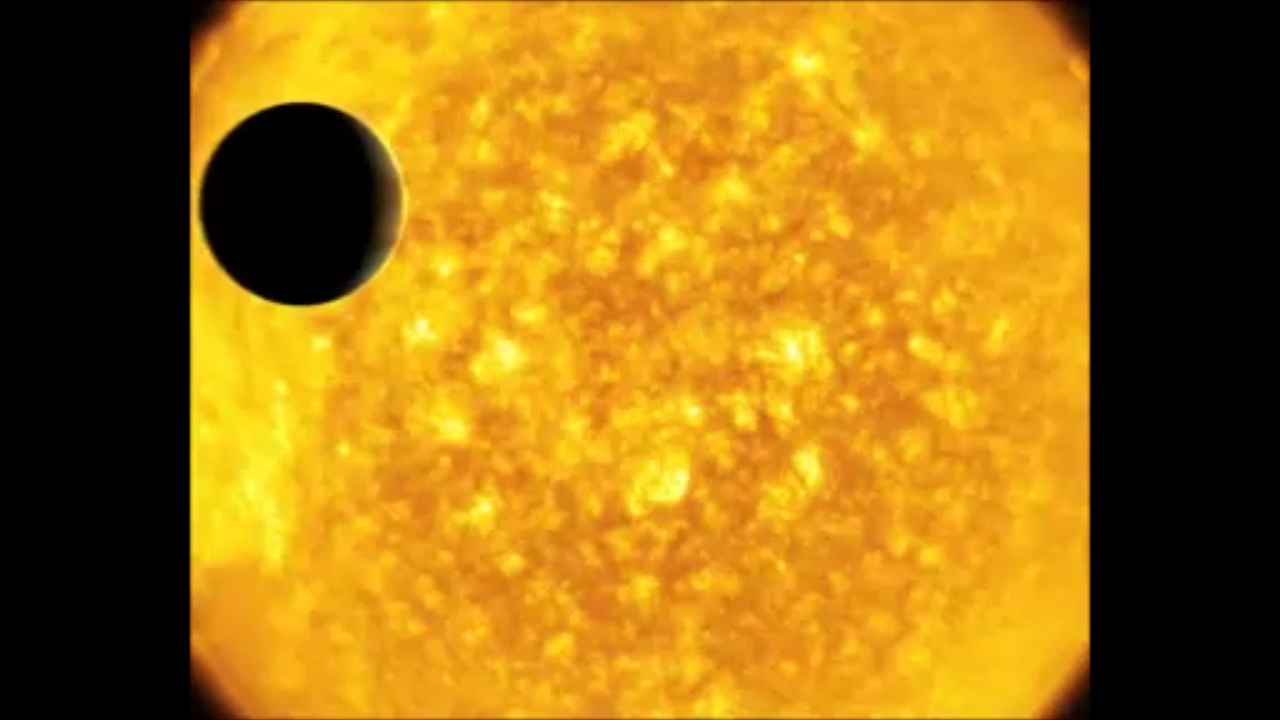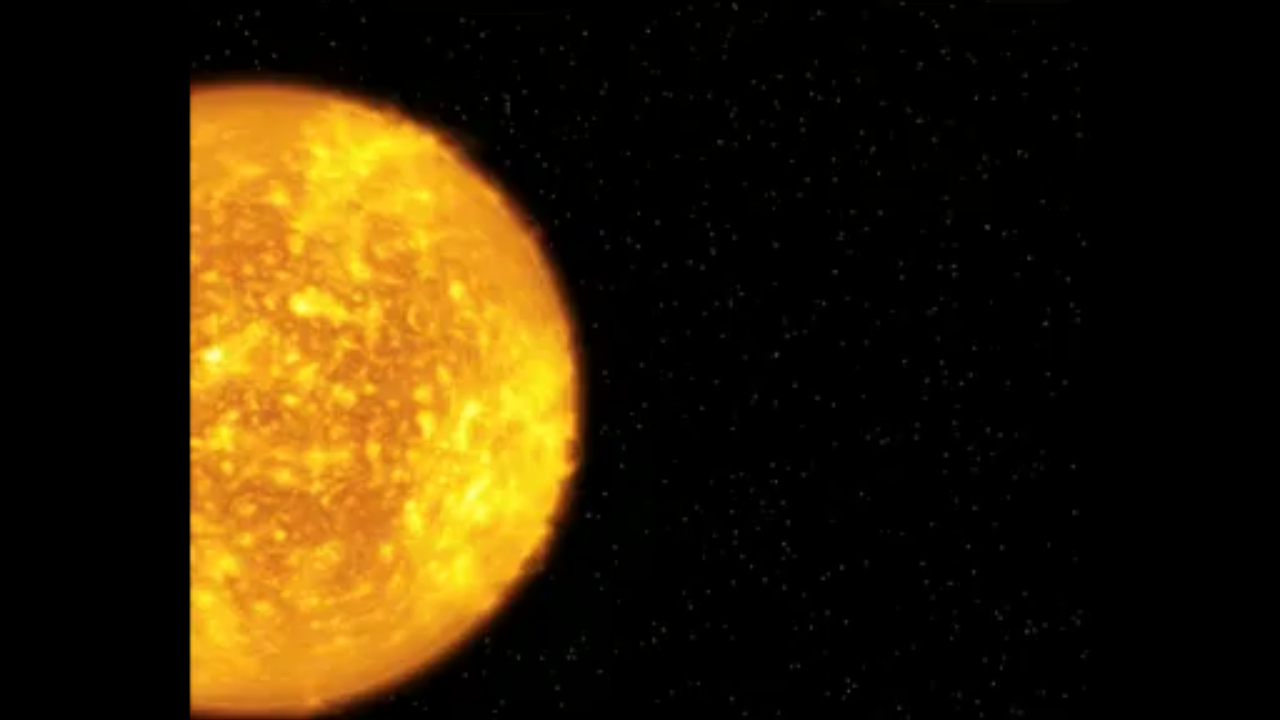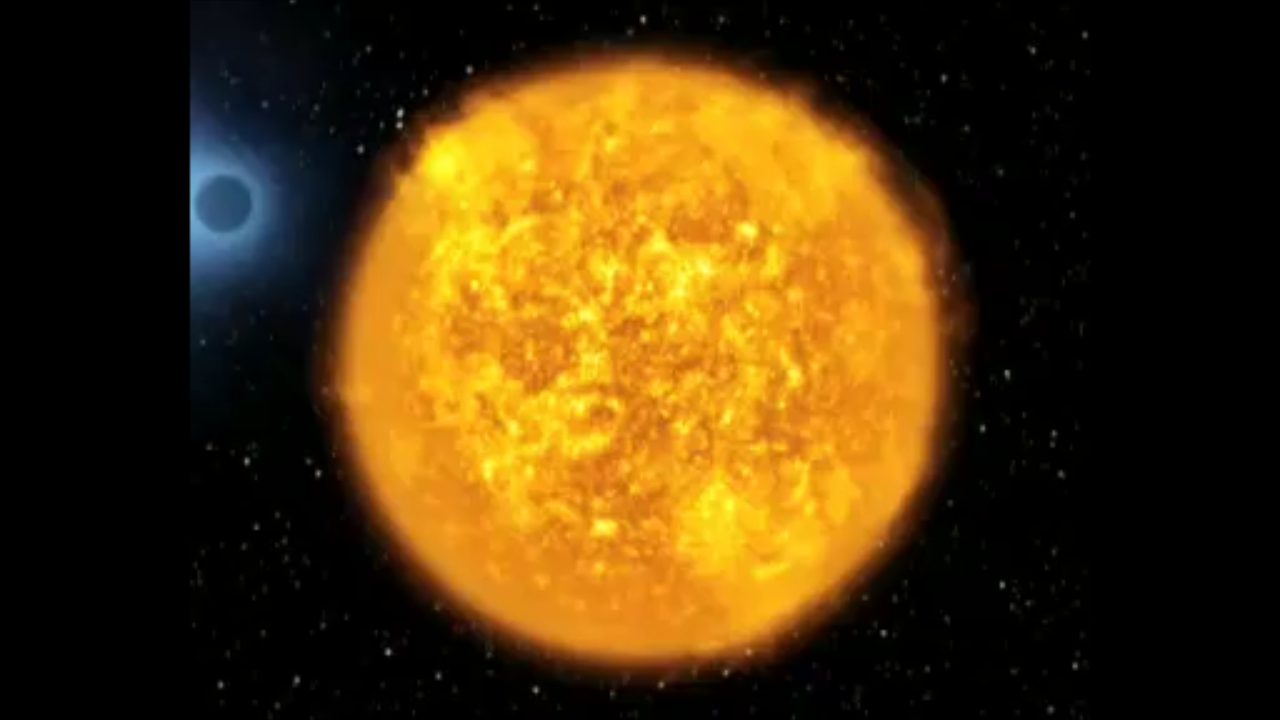1 min read
Artist’s Illustration – Evaporating Planet HD 209458b

Astronomers using NASA's Hubble Space Telescope have observed for the first time the atmosphere of a planet beyond our solar system evaporating into space.
This artist's illustration shows a dramatic close-up of the scorched extrasolar planet HD 209458b in its orbit only 4 million miles from its yellow, Sun-like star. The planet is a type of extrasolar planet known as a "hot Jupiter."
The planet's outer atmosphere is extended and heated so much by the searing heat from the nearby star that it starts to escape the planet's gravity. This huge envelope of evaporating hydrogen (shown in blue) resembles a comet with a tail trailing behind the planet. Astronomers estimate the amount of hydrogen gas escaping HD 209458b to be at least 10,000 tons per second, but possibly much more. Much of the planet may eventually disappear, leaving only a dense core.
About the Object
- R.A. PositionR.A. PositionRight ascension – analogous to longitude – is one component of an object's position.22h 03m 10.8s
- Dec. PositionDec. PositionDeclination – analogous to latitude – is one component of an object's position.+18° 53' 04.0''
- ConstellationConstellationOne of 88 recognized regions of the celestial sphere in which the object appears.Pegasus
- DistanceDistanceThe physical distance from Earth to the astronomical object. Distances within our solar system are usually measured in Astronomical Units (AU). Distances between stars are usually measured in light-years. Interstellar distances can also be measured in parsecs.46 parsecs (150 light-years)
- DimensionsDimensionsThe physical size of the object or the apparent angle it subtends on the sky.Estimated Planet Mass: 0.7 times Jupiter's mass; 220 times the Earth's mass
About the Data
- Data DescriptionData DescriptionProposal: A description of the observations, their scientific justification, and the links to the data available in the science archive.
Science Team: The astronomers who planned the observations and analyzed the data. "PI" refers to the Principal Investigator.These data are from the HST archived proposal 9064. The science team is composed of: A. Vidal-Madjar, A. Lecavelier des Etangs and J.-M. Désert (Institut d'Astrophysique de Paris, CNRS, France), G. Ballester (University of Arizona), R. Ferlet and G. Hébrard (Institut d'Astrophysique de Paris, France), and M. Mayor (Geneve Observatory, Switzerland). About HD 209458b: Object Description: Extrasolar Planet Transiting HD 209458; Jupiter-like Planet with Detected Atmosphere Orbital Period: 3.5 days Distance Above Star's Surface: 4 million miles (6.4 million kilometers) Estimated Mass: 0.7 times Jupiter's mass; 220 times the Earth's mass Maximum Temperature: 2000 degrees Fahrenheit (1100 degrees Celsius) - InstrumentInstrumentThe science instrument used to produce the data.HST>STIS
- Exposure DatesExposure DatesThe date(s) that the telescope made its observations and the total exposure time.August 11, 2001, September 7, 2001, September 14-15, 2001, and October 30, 2001, Exposure Time: 7 hours
- FiltersFiltersThe camera filters that were used in the science observations.G140M (1150-1700 Å), G430L (2900-5700 Å), E140M (1150-1700 Å)
- Object NameObject NameA name or catalog number that astronomers use to identify an astronomical object.HD 209458, HD 209458b
- Object DescriptionObject DescriptionThe type of astronomical object.Star with Transiting Planet, Jupiter-like Planet with Detected Atmosphere
- Release DateMarch 12, 2003
- Science ReleaseToo Close for Comfort: Hubble Discovers an Evaporating Planet
- Credit
Related Images & Videos
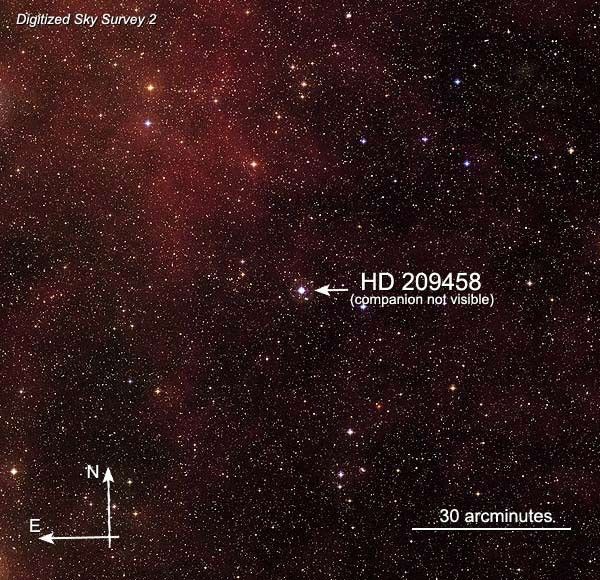
Location of Star HD 209458 (Annotated)
The parent star of transiting planet HD 209458b is called HD 209458. It is similar to our Sun and lies 150 light-years from Earth. The star is visible with binoculars as a seventh magnitude star in the constellation Pegasus. This is a a 1.9 x 1.9 degree three-color composite...

Location of Star HD 209458
The parent star of transiting planet HD 209458b is called HD 209458. It is similar to our Sun and lies 150 light-years from Earth. The star is visible with binoculars as a seventh magnitude star in the constellation Pegasus. This is a a 1.9 x 1.9 degree three-color composite...
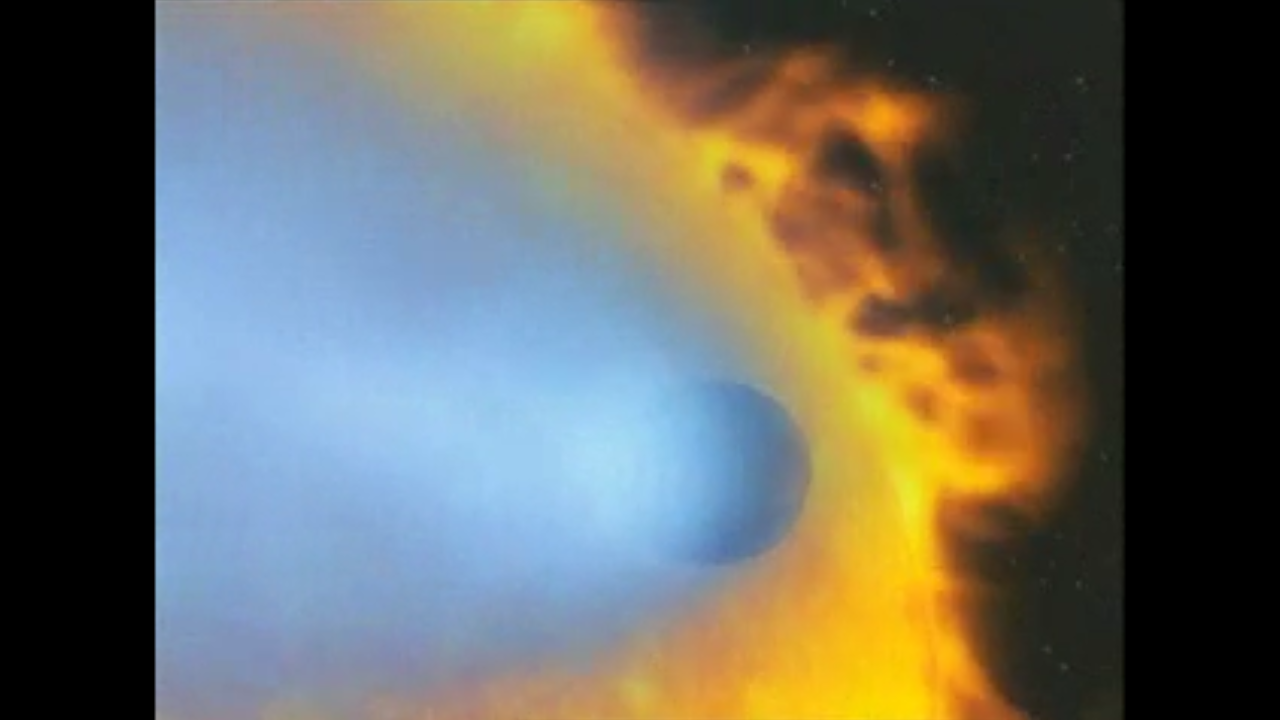
Video News Release: European Astronomers Observe First Evaporating Planet
STScI PR03-08 Video News Release European Astronomers Observe First Evaporating Planet [Earth animations, 0:00-0:15] The Earth - the planet on which we live. It orbits around our star, the Sun, at a safe distance of 150 million kilometres. But not all planets are so...
Share
Details
Claire Andreoli
NASA’s Goddard Space Flight Center
Greenbelt, Maryland
claire.andreoli@nasa.gov

